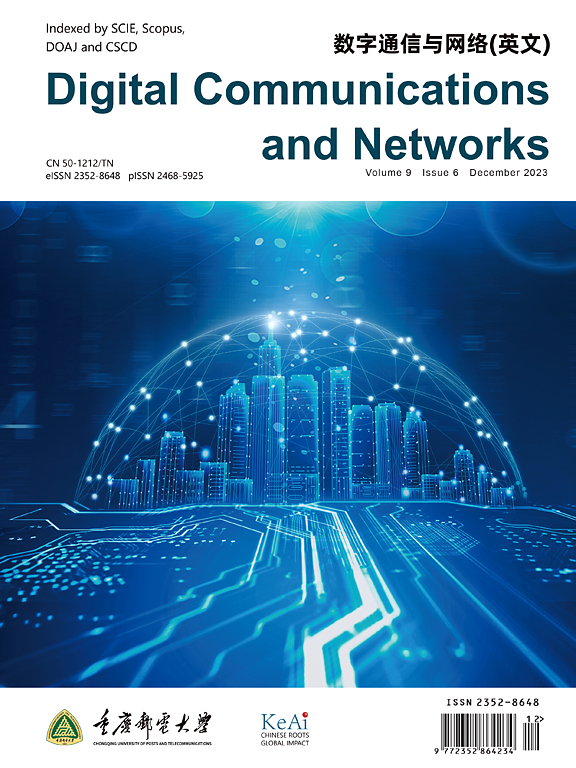深度学习辅助水声OFDM接收机:模型驱动还是数据驱动?
IF 7.5
2区 计算机科学
Q1 TELECOMMUNICATIONS
引用次数: 0
摘要
水声(UWA)信道受带宽限制,并且经历双选择性衰落。对于使用有限导频的正交频分复用(OFDM)通信,获取完美的信道知识是一个挑战。另一方面,深度学习(DL)方法在无线OFDM通信中已经非常成功。然而,它们是否能在水下工作仍然是个谜。本文首次比较了两类基于DL的UWA OFDM接收机:数据驱动(DD)方法作为端到端黑匣子,以及模型驱动(MD)方法,也称为基于模型的数据驱动方法,该方法结合了DL和专家OFDM接收机知识。采用编解码器框架和卷积神经网络(CNN)结构建立DD接收机。另一方面,MD接收机采用了基于展开的最小均方误差(MMSE)结构。通过蒙特卡罗仿真分析了不同通信条件下不同接收机的特性,提出了在不同通信条件下选择合适接收机的策略。为了验证DL接收机的可行性和优点,还进行了水池和海上的现场试验。结果表明,DL接收机在误码率方面优于传统接收机。本文章由计算机程序翻译,如有差异,请以英文原文为准。
Deep learning aided underwater acoustic OFDM receivers: Model-driven or data-driven?
The Underwater Acoustic (UWA) channel is bandwidth-constrained and experiences doubly selective fading. It is challenging to acquire perfect channel knowledge for Orthogonal Frequency Division Multiplexing (OFDM) communications using a finite number of pilots. On the other hand, Deep Learning (DL) approaches have been very successful in wireless OFDM communications. However, whether they will work underwater is still a mystery. For the first time, this paper compares two categories of DL-based UWA OFDM receivers: the Data-Driven (DD) method, which performs as an end-to-end black box, and the Model-Driven (MD) method, also known as the model-based data-driven method, which combines DL and expert OFDM receiver knowledge. The encoder-decoder framework and Convolutional Neural Network (CNN) structure are employed to establish the DD receiver. On the other hand, an unfolding-based Minimum Mean Square Error (MMSE) structure is adopted for the MD receiver. We analyze the characteristics of different receivers by Monte Carlo simulations under diverse communications conditions and propose a strategy for selecting a proper receiver under different communication scenarios. Field trials in the pool and sea are also conducted to verify the feasibility and advantages of the DL receivers. It is observed that DL receivers perform better than conventional receivers in terms of bit error rate.
求助全文
通过发布文献求助,成功后即可免费获取论文全文。
去求助
来源期刊

Digital Communications and Networks
Computer Science-Hardware and Architecture
CiteScore
12.80
自引率
5.10%
发文量
915
审稿时长
30 weeks
期刊介绍:
Digital Communications and Networks is a prestigious journal that emphasizes on communication systems and networks. We publish only top-notch original articles and authoritative reviews, which undergo rigorous peer-review. We are proud to announce that all our articles are fully Open Access and can be accessed on ScienceDirect. Our journal is recognized and indexed by eminent databases such as the Science Citation Index Expanded (SCIE) and Scopus.
In addition to regular articles, we may also consider exceptional conference papers that have been significantly expanded. Furthermore, we periodically release special issues that focus on specific aspects of the field.
In conclusion, Digital Communications and Networks is a leading journal that guarantees exceptional quality and accessibility for researchers and scholars in the field of communication systems and networks.
 求助内容:
求助内容: 应助结果提醒方式:
应助结果提醒方式:


